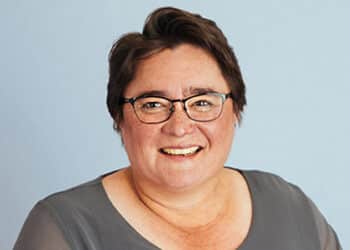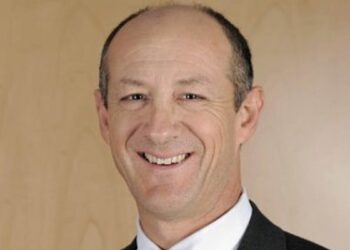Scott Hay-Bartlem, partner at Cooper Grace Ward Lawyers, said the Supreme Court case of Van Camp v Bellahealth Pty Ltd [2024] NSWSC 7 was one of the first cases that had to consider the aspect of capacity in BDBNs.
“BDBNs are written directions from members of a superannuation fund to the trustee setting out how they wish some or all of their superannuation benefit to be paid after their death,” he said.
“A nomination can be made in favour of the deceased’s dependents, such as a spouse, children or a person financially dependent on the member, or to the member’s estate, to be distributed in accordance with their will. There are tax exemptions or concessions if the death benefit is paid to certain dependents.”
The facts of the Van Camp case were that Dr Harry Nespolon and his de facto spouse, Lindy van Camp, had been in a relationship since 2014 and had two daughters together. They resided in a property owned solely by Dr Nespolon and most of their assets were held in Dr Nespolon’s name.
“Before his death, when discussing the terms of his will with his solicitor, Dr Nespolon had expressed his concerns about Ms van Camp’s ability to handle money and that she would re-partner after his death,” Hay-Bartlem said.
“For this reason, they discussed leaving his estate to a trust for Ms van Camp’s benefit but controlled by a third party. Despite the solicitor explaining there would be no tax payable if his death benefit passed to Ms van Camp, Dr Nespolon said he instead wanted his death benefit to go to the estate to form part of the trust and a draft will was sent to Dr Nespolon but not signed.”
Ms van Camp expressed concerns about her ability to access funds for the benefit of the family after Dr Nespolon had died and raised these concerns with Dr Nespolon for a significant period before his death. His view was that the income from various trusts would be sufficient for Ms van Camp, and he took steps to appoint her to control some of those trusts.
Hay-Bartlem said that a couple of months after these discussions, Dr Nespolon engaged a new financial adviser, who recommended he make a BDBN in favour of Ms van Camp, which would reduce the tax payable on his death.
Dr Nespolon was admitted to hospital on 15 July 2020 and signed his will on 23 July 2020. He was visited in hospital by Ms van Camp the following day after which he called his solicitor with instructions to urgently prepare a BDBN in her favour. In court, the solicitor noted that he sounded “drugged up”.
Dr Nespolon signed the BDBN on 26 July 2020, the day of his death, and although Ms van Camp arranged for the BDBN to be printed and taken to him, she did not take the covering email that contained advice from the solicitor regarding the content and effect of the BDBN.
Dr Nespolon’s doctor, who was witnessing the document, asked his patient if he knew what he was signing and Dr Nespolon responded that it was related to his will, and was to prevent Ms van Camp from being “taxed out of her brains”.
There were several arguments put before the court for the BDBN to be set aside.
One of those was that the trustee of the superannuation fund formed a view that the BDBN was invalid, because first, Dr Nespolon lacked capacity to make the BDBN when he signed it, and second, there was unconscionable conduct by Ms van Camp.
“The trustee proposed to pay the death benefit to Dr Nespolon’s estate, which would result in the death benefit passing to the testamentary trust established by the will,” Hay-Bartlem said.
However, the court rejected the arguments of the trustee. In its ruling, the court referred to a number of general principles including that the standard of capacity required by law is specific to the transaction.
It stated that the question is not whether the person actually understood the transaction, but whether they were capable of understanding the transaction had an appropriate explanation been given.
“Additionally, the court said that the presumption of capacity meant that it was up to the party seeking to have the BDBN set aside to prove that Dr Nespolon lacked capacity to make the document,” Hay-Bartlem said.
In its counter-argument, the trustee argued that the BDBN was a complex document given the consequences for Dr Nespolon’s broader estate planning and that Dr Nespolon needed to be capable of comprehending and weighing up the benefits of paying the death benefit to each possible dependent.
“However, the court rejected this argument on the basis that capacity has to be assessed in light of the particular transaction and that a BDBN itself is not complicated, adding the terms of Dr Nespolon’s BDBN were straightforward as he was directing the trustee to pay his death benefit to Ms van Camp,” Hay-Bartlem said.
“It continued that Dr Nespolon was well educated in business and medicine, was a director of various companies and would be capable of understanding the terms and effect of the document if it was explained to him and the medication he was taking would have affected his cognitive function, but the degree of impairment was difficult to ascertain, stating that he demonstrated an understanding of the purpose of the BDBN in his response to the doctor who asked if he knew what he was signing.”
Regarding the claim that Mc Van Camp had acted unconscionably, the court applied the elements of unconscionable conduct that include a relationship that places one party at a special disadvantage over the other. There is knowledge of the special disadvantage by the stronger party and unconscientious exploitation by the stronger party of the weaker party’s disadvantage.
“Ultimately, the court held that Ms van Camp’s conduct could not constitute unconscionable conduct as she had not been the source of Dr Nespolon’s belief that he should make a BDBN in her favour and that her request for funds and concerns about expenses was a likely factor contributing to the Dr Nespolon’s decision to instruct the solicitor to prepare a BDBN in her favour,” Hay-Bartlem said.
“It also stated that given the urgency, emotions and stress Ms van Camp would have been experiencing, her failure to print and take the solicitor’s covering email with advice about the effect of the BDBN to Dr Nespolon for him to review was probably unintentional and not dishonest.”
Hay-Bartlem said this case is interesting as it separates the making of a BDBN from the broader estate planning context, and reiterates the principle that capacity is to be assessed in relation to the particular document or transaction being entered into.
“In that sense, it reflects the reasoning in the Queensland decision of Lambourne v Marrable [2023] QSC 219 (which is currently under appeal),” he said.
“It also serves as a reminder of the importance of clear documentation and of taking notes of discussions had with clients as a safeguard against disputes about the validity of estate planning documents.”


